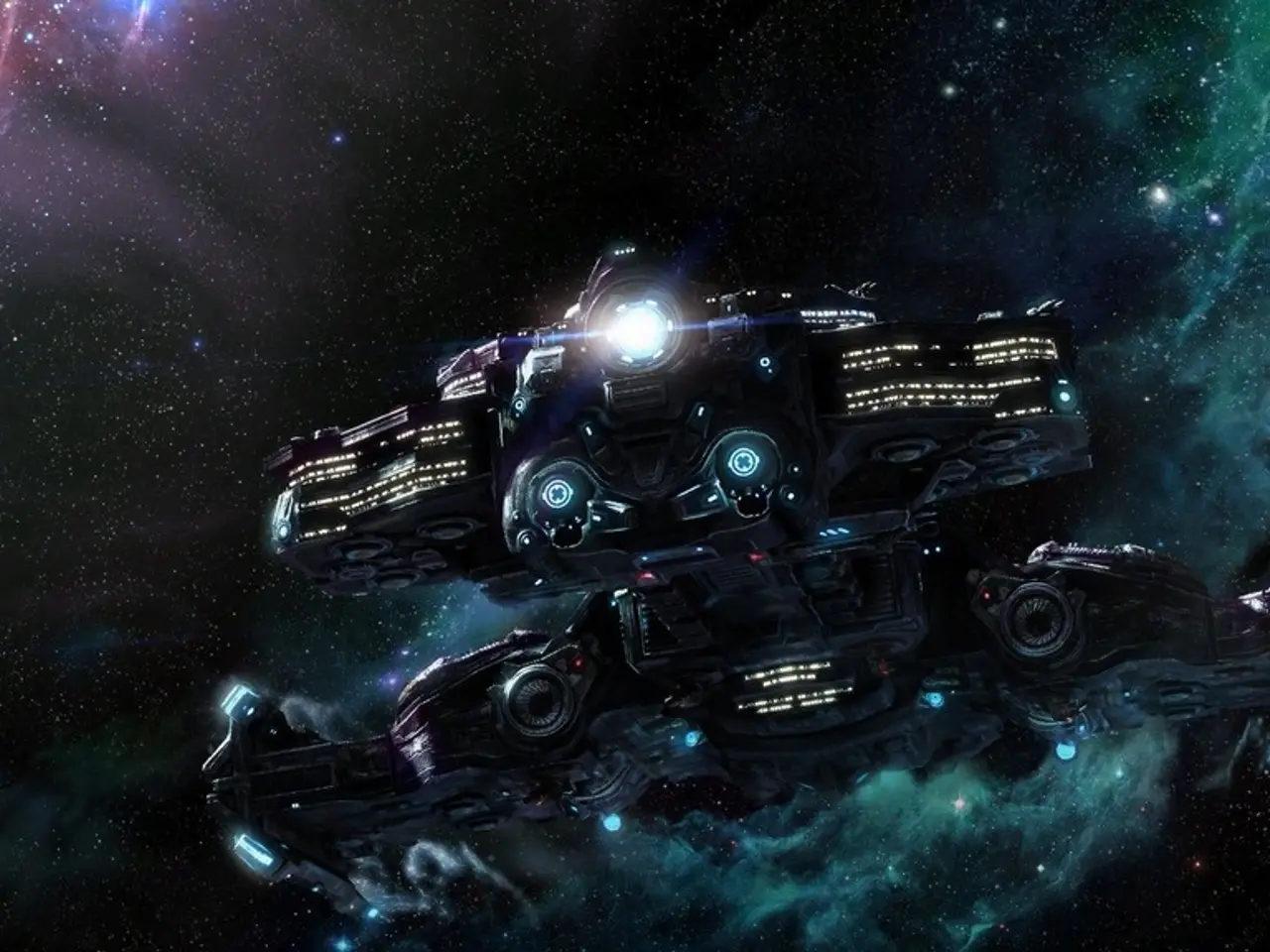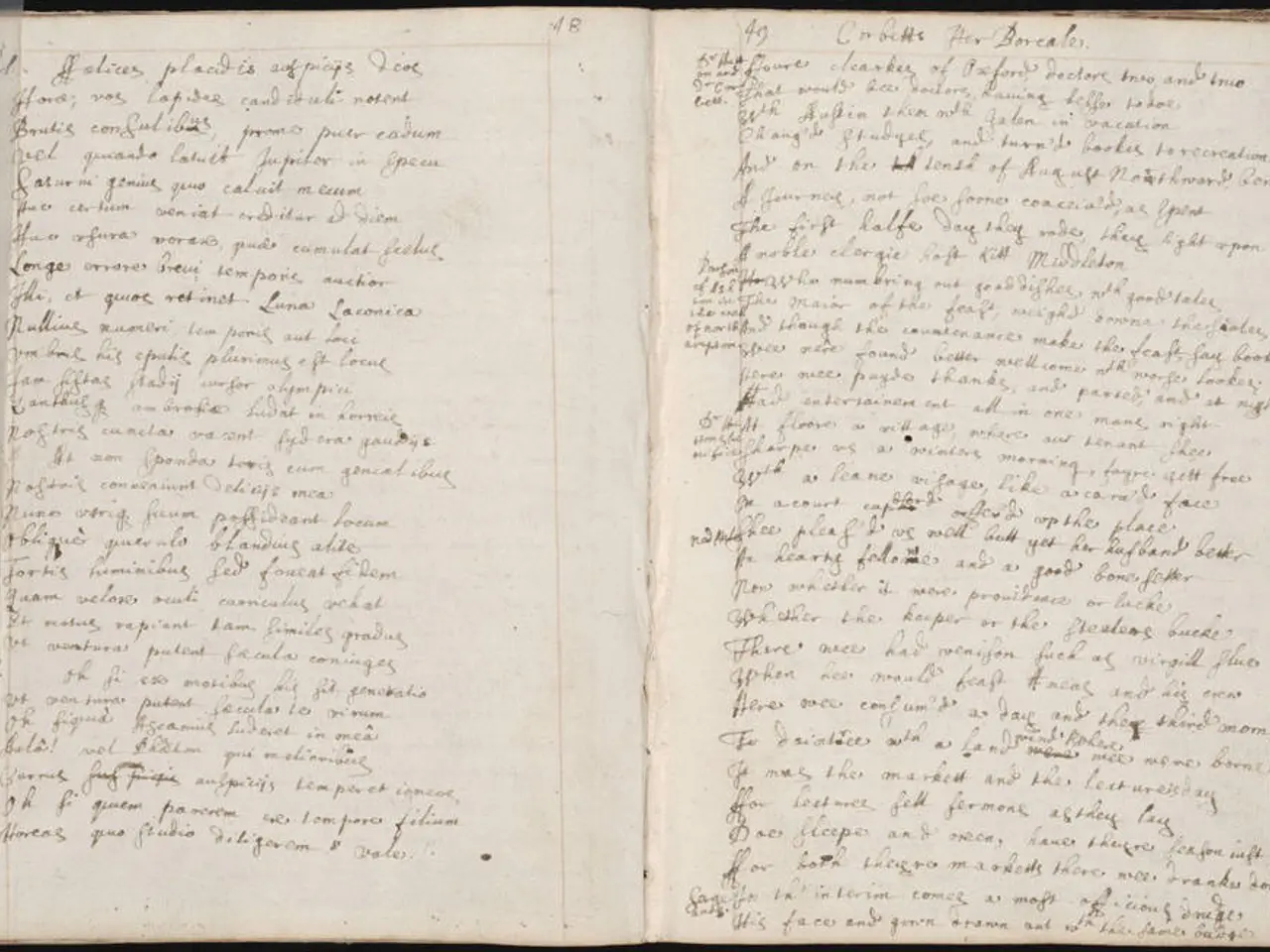Spacecraft Prototype Demonstrates Advancement Despite setbacks during Atmospheric Re-entry
On May 27, 2025, at 6:36 p.m. CT, SpaceX launched the ninth Starship test flight from Starbase, Texas. This flight was significant as it aimed to gather real-world data to improve the performance of future Super Heavy vehicles.
The Super Heavy booster, Booster 14, made history by becoming the first reused Super Heavy booster in the Starship programme. This marked a crucial step towards SpaceX's goal of reusability. The booster completed a full ascent burn using all 33 Raptor engines, which had undergone modifications, including additional preload on key joints, a new nitrogen purge system, and improvements to the propellant drain system.
During the flight, the Super Heavy booster performed the first deterministic flip followed by its boost-back burn. It also tested a new flight profile by increasing the amount of atmospheric drag on the vehicle during its descent.
The mission planned to open the payload bay and release eight Starlink simulator satellites, followed by a single-engine relight. However, a control issue prevented the engine restart, and Starship couldn't get into the proper position for reentry. As a result, the payload bay door was unable to open, and the satellites remained aboard.
Despite these challenges, the flight was hailed as a "major milestone for reuse" by SpaceX, with the first flight-proven Super Heavy booster being used. Unfortunately, the Super Heavy booster was lost before its planned splashdown in the Gulf of Mexico. All debris was expected to fall within a pre-designated zone in the Indian Ocean.
The Starship spacecraft, Ship 35, experienced a propellant leak that led to a loss of attitude control. This prevented the reignition of a Raptor engine, and the vehicle ultimately broke apart during re-entry. The flight, despite the outcome, marked progress towards Starship's goal of enabling life to become multiplanetary.
SpaceX called the loss of contact, which occurred about 46 minutes into the flight, a "rapid unscheduled disassembly." Developmental testing by definition is unpredictable, and this flight was no exception.
In conclusion, while the ninth Starship test flight faced challenges, it marked significant strides in SpaceX's mission to reuse Super Heavy boosters and advance space exploration. The company continues to learn and adapt, bringing us one step closer to a future where life can exist on other planets.
[1] Space.com, "SpaceX's Starship SN15 Test Flight: What We Know So Far," https://www.space.com/spacex-starship-sn15-test-flight-what-we-know-so-far
[2] Ars Technica, "SpaceX's Starship SN15 test flight: A look at what went wrong," https://arstechnica.com/science/2025/05/spacexs-starship-sn15-test-flight-a-look-at-what-went-wrong/
[3] TechCrunch, "SpaceX's Starship SN15 test flight: What we learned from the explosion," https://techcrunch.com/2025/05/27/spacexs-starship-sn15-test-flight-what-we-learned-from-the-explosion/
The flight utilized advancements in technology, as the Super Heavy booster, Booster 14, underwent modifications in its Raptor engines, nitrogen purge system, and propellant drain system. This endeavor in space-and-astronomy was significant for the application of science, as it aimed to gather real-world data to improve the performance of future SpaceX missions.




